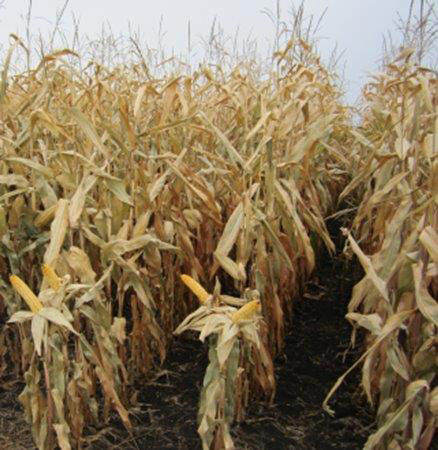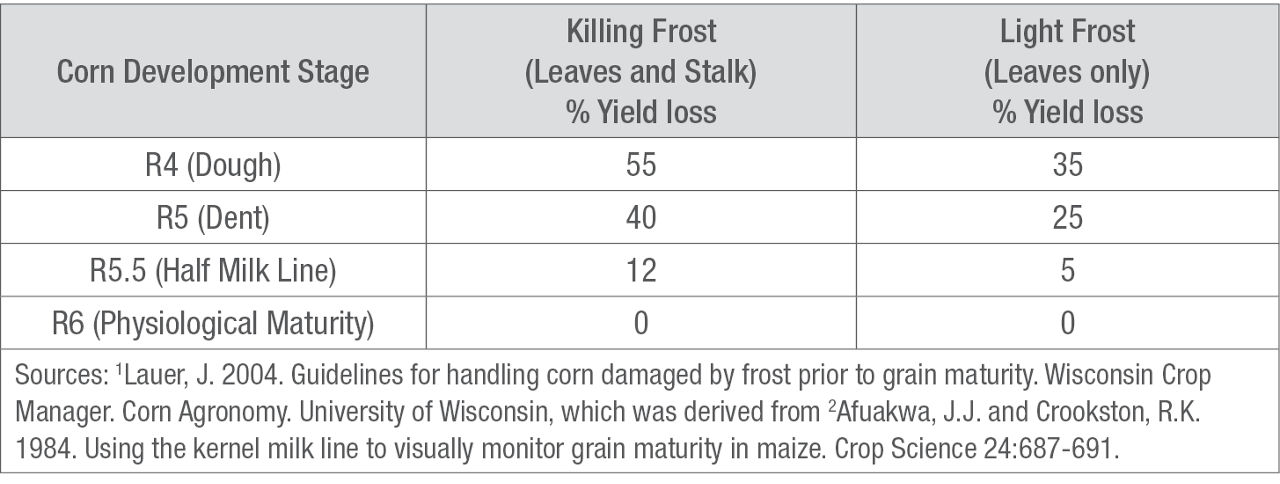Potential Impact of an Early Frost on Corn, and Soybeans
September 24, 2023
Premature frost to maturing crops seems to happen most every year somewhere in the United States. Whether due to an earlier than normal cold snap or late planted crops, the effect of cold temperature on developing plants can potentially cause yield loss and other issues such as stalk quality problems, ear drop, low test weight, and grain quality issues.
Temperatures around 31° F often cause leaf and stem damage that may not totally kill the plant but severely affects the photosynthesis capability of the plant to continue to fill grain.1 Leaves, stems, stalks, and pods that appear initially water soaked may have a dried-out appearance after several days (Figure 1). Because the plant is not totally dead, grain can continue to fill at a slower pace and stalk quality may degrade. Corn ears may prematurely drop due to a weak shank. An earlier than normal harvest is recommended to reduce losses. In soybean, pods that are not frosted may continue to fill; however, seed maybe smaller. Plants with some mature pods are likely to impacted less by the frost.

A temperature of 28° F is considered the point at which corn, and soybean plants are killed and the translocation of nutrients and the accumulation of dry matter ceases.1 In corn, the early formation of a black or brown layer on the kernel tip results in kernels having a lower test weight, shorter storage life, and more broken kernels. Often low-test weight corn is lower in starch content but higher in protein and fiber. Killed, immature soybean plants result in green, oddly shaped seeds, especially near the top of the plant. Harvest in these fields is often delayed because immature plants are slower to dry. Frozen soybean yield losses can vary widely depending on maturity. Just a couple of days advantage can make a 25% difference in yield and quality. Table 1 shows potential yield losses in corn by maturity after a light or killing frost.
Table 1. Potential grain yield loss after light and killing frosts at different growth stages.1,2

Doug Gloystein
Channel Agronomist
Sources:
1Lauer, J. 2004. Guidelines for handling corn damaged by frost prior to grain maturity. Wisconsin Crop Manager. Corn Agronomy. University of Wisconsin. http://corn.agronomy.wisc.edu/WCM/W156.aspx
2Afuakwa, J.J. and Crookston, R.K. 1984. Using the kernel milk line to visually monitor grain maturity in maize. Crop Science 24:687-691.
1110_279153
You may also like...
Here are some articles that may also be of interest to you